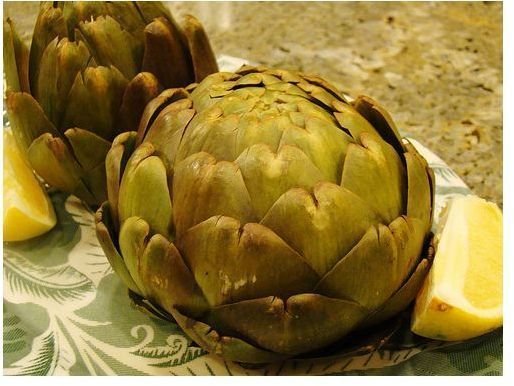Treatment for Gallstones — What Are the Options?
Gallbladder Health
The gallbladder produces bile, which aids the digestion process by helping to break down fats. When the bile fluid is saturated with cholesterol and other substances or possibly because the flow of bile is not balanced, small hard crystals may develop, known as gallstones. The majority of gallstones are cholesterol stones, while the remaining are formed from calcium bilirubinate. Gallstones can be small and plentiful, with literally hundreds of tiny grains in the gallbladder, or they can become as large as a golf ball.
It is estimated that as many as one in ten people have gallstones and are not aware of it. If there are no symptoms, treatment for gallstones
may not be necessary. In this case eating a healthy low-fat, high-fiber diet and drinking plenty of water and fresh juices can help to maintain liver and gallbladder health.
Recurrent gas, bloating, belching and nausea may indicate problems with the gallbladder. Treatment may be necessary to remove or dissolve the stones. As these formations can block the flow of bile if they become stuck in any of the bile ducts, they can lead to more serious problems such as an inflammation of the gallbladder. If left untreated these problems can be very serious, even fatal.
While surgery is an effective way to treat gallstones as they are completely removed from the body, it is not always necessary or appropriate. Learn about the benefits of risks of surgery, medications and alternative remedies to treat gallstones.
Surgery
The most common way that gallstones are treated is with surgery. A procedure known as a cholecystectomy is used to remove the gallbladder. If stones are also located in the bile ducts they will have to be removed as well. Gallbladder removal surgery is a relatively common procedure. Injury to the bile ducts is a possible complication, which can lead to leaking bile and a potentially dangerous infection.
While the body can still thrive without the gallbladder many patients do experience gastrointestinal problems even after surgery. While gallbladder removal may be necessary and even life-saving if the gallbladder is severely infected and inflamed, it may come with side effects. Make sure you ask your doctor about what diet to eat after surgery to help support your liver, prevent the formation of more stones in the future and to minimize potential digestive issues.
Oral Dissolution Therapy
When surgery is not an option, such as when a patient has another medical condition that would make the procedure dangerous, cholesterol stones can be treated with oral medications. Medications are not a treatment option for large stones. Ursodiol and chenodiol are two drugs which are taken to help dissolve the stones. It may take from months to years to dissolve the stones and there are side effects such as diarrhea and higher cholesterol levels. Oral dissolution therapy can be very expensive.
Contact Dissolution Therapy
This is a newer form of treatment that should only be performed by experienced doctors. An organic solvent is injected into the gallbladder to dissolve the stones. Research has shown that this method is effective. It does however come with severe burning pain as a side effect.
Alternative Remedies
Another option is to use natural therapies to help dissolve the stones. As with oral medications this usually takes time and is more effective for small stones. As opposed to conventional treatment options for gallstones, dietary changes and herbs do not have the negative side effects. In fact they are meant to dissolve the stones and to support the health of the liver and gallbladder in the long-term.
Talk to your doctor about seeing a naturopathic physician who can instruct you about what herbs and food to use to improve your condition
and get rid of the stones. They can also outline cleansing detox diets that can be very effective. In general, a diet high in fruits and vegetables, and low in animal products and processed, fatty and refined foods is necessary. Drinking plenty of water as well as fresh apple, pear, cucumber and beet juices will help. Consistently drinking herbal teas such as chamomile, peppermint, ginger, barberry bark, dandelion root and boldo is also helpful.
A simple natural tonic to help try and encourage natural gallstone elimination consists of:
- 3 tablespoons of olive oil
- Juice from one fresh lemon or grapefruit
Drink before going to sleep with a glass of water. Try to sleep on your right side. Drink again when you wake up. To try and make this flush more effective make sure you are drinking plenty of fluids during the day, particularly apple juice, water and chamomile tea.
Prevention
When symptoms are not present it may seem that gallstones are not a big deal. If stones become lodged in bile ducts and start to cause problems they very quickly can become very serious — from digestive problems to severe abdominal pain to having to face the option of gallbladder removal. The best treatment for gallstones is prevention. Eat a healthy diet, rich in fiber and nutrients and low in cholesterol and processed products, and drink lots of water. Also, getting regular exercise can help you maintain good digestive health.
References
National Digestive Diseases Information Clearinghouse, https://digestive.niddk.nih.gov/ddiseases/pubs/Gallstones/#7
University of Maryland Medical Center, https://www.umm.edu/patiented/articles/what_general_approach_treating_gallstones_gallbladder_disease_000010_7.htm
Balch, Phyllis A. “Prescription for Nutritional Healing.” Fourth Edition (Penguin Books, 2006).
Page, Linda. “Healthy Healing: A Guide to Self-Healing for Everyone, 11th Edition” (Traditional Wisdom, 2003).
photo of artichokes by Norwichnuts/flickr
photo of chamomile tea by Paul Downey/flickr
Disclaimer
Please read this disclaimer regarding the information contained within this article.
